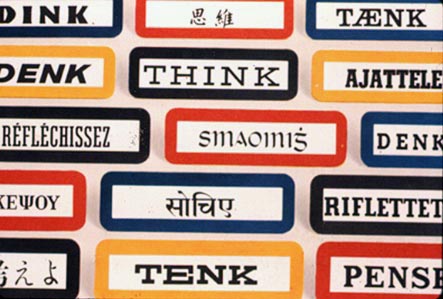Sales enablement continues to push the boundaries in improving the capabilities of sales professionals. New tools, training, processes, capabilities all focus on helping sales people be more impactful, relevant, timely–as well as more efficient and effective.
Analytics help us identify customers with a higher propensity to buy. Prescriptive approaches help guide us down a path that maximizes success (do this, don’t do that). Playbooks tell us what to do, with who, and how to do it. There’s a never ending set of tools that enable us to research and better understand the companies and people we are engaging.
But what happens when they fail? What happens when they get us 80% of the way there, how do we complete the last 20%? What happens, in the moment, when we are having a discussion with a customer and all of a sudden they take a right turn, when we expected/wanted them to take a left turn.
No tool, no training program, no script, no set or prescriptive guidelines can handle every situation, every customer, at any point in time. When you think about it, it’s actually great news for sales people. When tools have that capability, then sales people aren’t needed and those who predict the death of sales will find themselves vindicated.
The reality is, we are really quite limited, thankfully so, in our ability to be prescriptive, to be able to define the set of steps, conversations, questions, answers that can handle any situation, let alone every situation sales people face.
Yet too often, it seems that managers and sales people, think, wish, hope they can. We see this all the time. A sales person struggling when a customer isn’t reading from the same script the sales person was taught. Research tools that enable us to understand the industry, market, personas–but we can’t translate them to companies or individuals. Sales people relying on the tools to the extent they become a crutch.
In many ways, rather than enhancing the abilities of sales people, we actually are “dumbing them down.” We are leveraging formulaic approaches but not providing them the capabilities to be successful when the formula fails.
To some, it’s a relief, “It’s not our fault, the tools/systems just don’t have the capability. They failed us.”
Recently, I had the privilege of meeting with the executive team of one of the best performing sales organizations in the world. We got into a conversation about this very issue, struggling with the question, “How do we help the sales person, when the training, tools, systems, processes can’t go the distance,” which we agreed was 99.9999% of the time.
We think it has to do with something painfully obvious—critical thinking.
How do we develop our people’s abilities to think critically? How do we develop our people’s abilities to figure things out?
One answer is to recruit for it. As we assess candidates, it’s important to look at their ability to think critically, to figure things out, to move into problem solving mode. There are very powerful tools–case studies, simulations, role plays that we can incorporate into our recruiting processes to assess this ability. There are even assessment tools to help with this.
I believe we can train people to do this—at least to dramatically improve their skills to think critically. I don’t have any proof other than school teachers are trying to do this every day with kids. Education is moving from rote memorization, the ability to hit testing scores to developing the abilities of children to think critically, analyze and solve problems. There’s much we can learn from what is being done in our K-12 schools and in our universities.
One of the problems I see, however, is that I’ve never seen “critical thinking, figuring it out” on a list of priorities in any sales enablement/training/or other development program. Yes, people are recruiting for it, but we aren’t continuing to develop these capabilities in our people and organizations. Too often (I know I sound like a broken record) I see the focus going the other direction–dumbing things down, scripting, taking the judgment/thinking/analyzing out of the process.
There’s an interesting paradox when we develop our people’s abilities to think critically. If we are successful, we don’t have to invest so much in scripting, prescription, tools or other things. Simply because we are giving them the capability of figuring it out, adapting and doing what they need to be doing to be successful.
It’s no wonder we find it increasingly difficult to engage customers.
As we enter a new year, it’s each sales executive should put “improving our people’s ability to think critically, to be able to analyze and solve problems, to figure things out,” at the top of their developmental priorities.
No sales person should wait for their leaders to figure it out and put in place programs and tools to improve their ability to think critically. Reading, studying, taking on line courses–there’s plenty available, much of it free or very low cost.
What are you doing to address this issue? How are you figuring it out?

Dave writes:
“We think it has to do with something painfully obvious—critical thinking.”
Dave, what do you think critical thinking is?
Because, I know exactly what is taught in Universities/Colleges under the rubric of “Critical Thinking”.
(And I am pretty sure that isn’t what you are looking for.)
Michael, I agree–we actually had a long discussion on this in another post related to Critical Thinking. What Universities teach in their critical thinking classes is not what I am speaking of here. But what you learn in a good literature, engineering, physics, history, or even business class, as well as in K-12, helps develop our capabilities to think critically. Regards, Dave